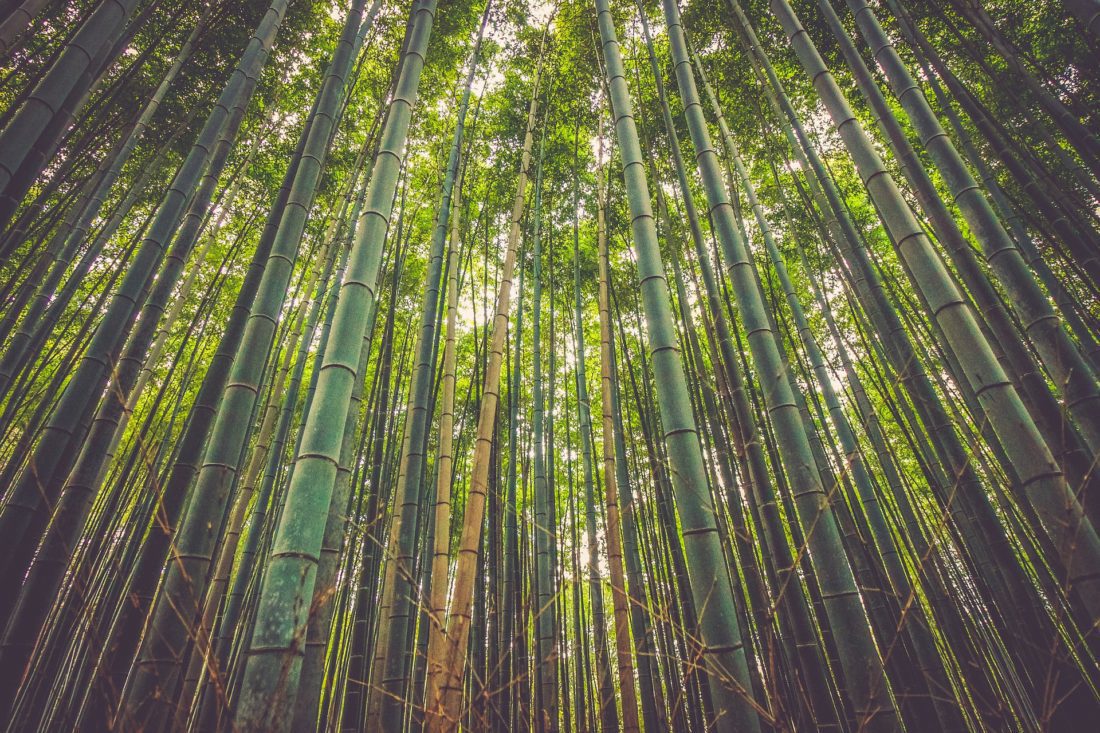The Trouble With Bamboo Clothing
As with anything in life, we have to dig a little deeper to find out what’s really going on. On the surface, bamboo appears to be a sustainable option. However, the problem comes when it is transformed from a plant into usable fabric. In fact, most bamboo fabrics on the market are actually a form of rayon where the manufacturing process is highly intensive and involves many harmful chemicals.
In order to create the silky, soft bamboo fabric that is attractive for clothing, large amounts of harsh chemicals such as sodium hydroxide (also known as lye or caustic soda), carbon disulfide, and sulfuric acid are needed to break down the tough cellulose of bamboo plants into a soft material that feels nice against the skin. This process involves dissolving the cellulose material (in this case the bamboo) in a chemical solution to produce a pulpy substance. This substance is then pushed through a spinneret and spun into the fibers used to make threads and fabric. Other harmful chemicals are often used later in the process as well, such as heavy metals, formaldehyde, chlorine bleaches, and dyes. The end product of this process ends up being a mix of both natural and synthetic fibers—certainly not organic.
Because of the way bamboo is processed, standards organizations like the Global Organic Textile Standard (GOTS) and the Soil Association do not give certification to bamboo clothing. According to GOTS, almost all bamboo fiber used in industrial textile production is melted and regenerated using a viscose/rayon process and is not considered a natural or organic fiber, even if the bamboo plant was originally certified organic on the field. In 2010, the Canadian Competition Bureau ordered manufacturers to remove the “eco-friendly” label from textiles made from bamboo cellulose because it was misleading to consumers.
A Better Option for Bamboo
Although bamboo clothing is problematic for the reasons outlined above, it is much better as a resource for furniture, flooring, and alternatives to plastic like plates and utensils. Bamboo is considered to be a very sustainable resource—if grown naturally—for a number of reasons:
- Grows efficiently and replaces itself quickly. Bamboo is the fastest growing plant on Earth. It takes just three or four years to go from seed to harvest. It also has such an expansive root network that it doesn’t need to be replanted—new stalks quickly shoot right back up on their own to replace those that were cut down. Some species can grow up to 1 meter per day and up to 60 feet high within 90 days.
- Does not require pesticides or insecticides. Bamboo is naturally pest-resistant, so there is no need to spray chemicals on it.
- Prevents soil erosion. Because bamboo roots are never disturbed, a canopy always remains in place, which helps prevent soil erosion. The canopy also reduces the surface temperature in the immediate area as the bamboo leaves absorb sunlight and provide constant shade.
- Does not drain water resources. Bamboo grown in Asia does not require irrigation because it is harvested in a climate that has sufficient rainfall needed for the growth of the plant.
- Improves the atmosphere. Bamboo is one of the most efficient plants for taking in carbon dioxide and producing oxygen during photosynthesis.
Bamboo is often considered to be one of the most renewable and sustainable resources in the world. If left to grow naturally, it certainly is an attractive green option. However, the majority of bamboo is grown in China where environmental standards are lacking. We don’t have enough information regarding how intensively bamboo is being harvested or the amount of land clearing underway in order to grow more bamboo for industry. Also, although bamboo doesn’t need pesticides, there is no guarantee that they are not being used to maximize production.
For all of these reasons, it is still not clear how sustainable bamboo is overall. We need to look to international guidelines and ratings to decipher how green any product we are considering buying actually is. It may just be a matter of time when stricter standards are implemented or cleaner processes are developed to ensure that bamboo is both safe for the environment and our family’s health. Until then, Cat & Dogma is sticking with organic cotton to keep your precious little ones safe and snuggly.
Written by Sandi Schwartz


